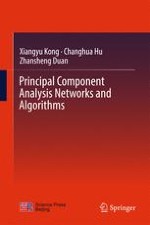2017 | OriginalPaper | Buchkapitel
7. Generalized Principal Component Analysis
verfasst von : Xiangyu Kong, Changhua Hu, Zhansheng Duan
Erschienen in: Principal Component Analysis Networks and Algorithms
Verlag: Springer Singapore
Aktivieren Sie unsere intelligente Suche, um passende Fachinhalte oder Patente zu finden.
Wählen Sie Textabschnitte aus um mit Künstlicher Intelligenz passenden Patente zu finden. powered by
Markieren Sie Textabschnitte, um KI-gestützt weitere passende Inhalte zu finden. powered by
